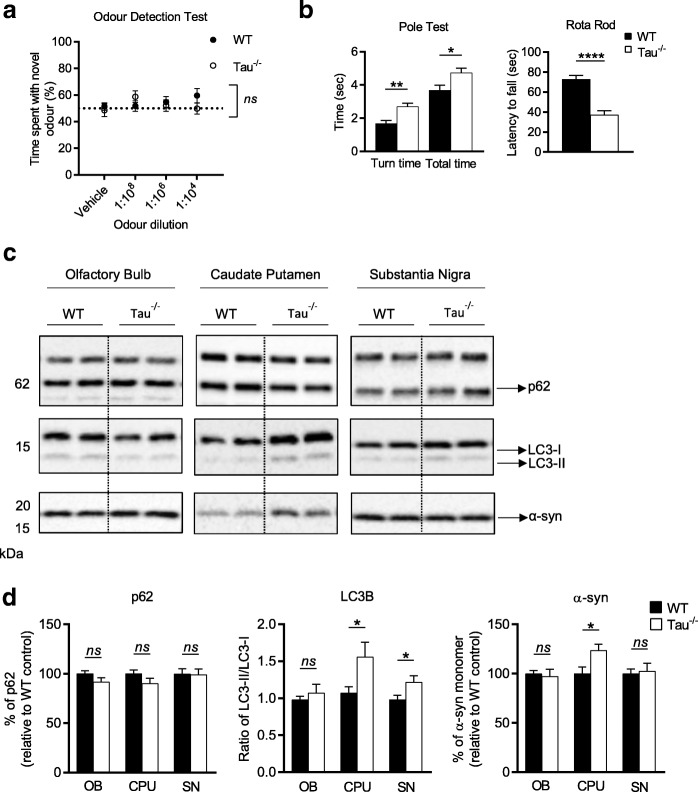Fig. 2.
Olfactory deficit, motor performance and pathological features in 15-month-old tau−/− mice. a Odour detection test performed on 15-month-old tau−/− (n = 13) and littermate WT controls (n = 8). b Motor evaluation of 15-month-old tau−/− (n = 11) and littermate WT control (n = 8), including Rota Rod and Pole Test performance. c Representative western blots of cell lysate from olfactory bulb, caudate putamen and substantia nigra from 15-month-old tau−/− (n = 6) and littermate WT controls (n = 6) immunoblotted for p62, LC3B and α-syn. d Quantification of western blot densitometry presented as % of p62 relative to WT control, ratio of LC3-II/I relative to WT control and % of α-syn relative to WT control. Cell lysate for western blots normalised to automated total protein measurement via ChemiDoc stain-free detection software. ODT analysed by two-way repeated measures ANOVA (one factor repetition) with Fisher LSD post-hoc comparisons. Motor tests analysed by unpaired two-sided t test. Western blot analysed by unpaired two-sided t test from 3 independent repeats, * p < 0.05, ** p < 0.01, *** p < 0.001, **** p < 0.0001, ns: not significant. Full western blot images presented in Additional file 1: Figure S4

